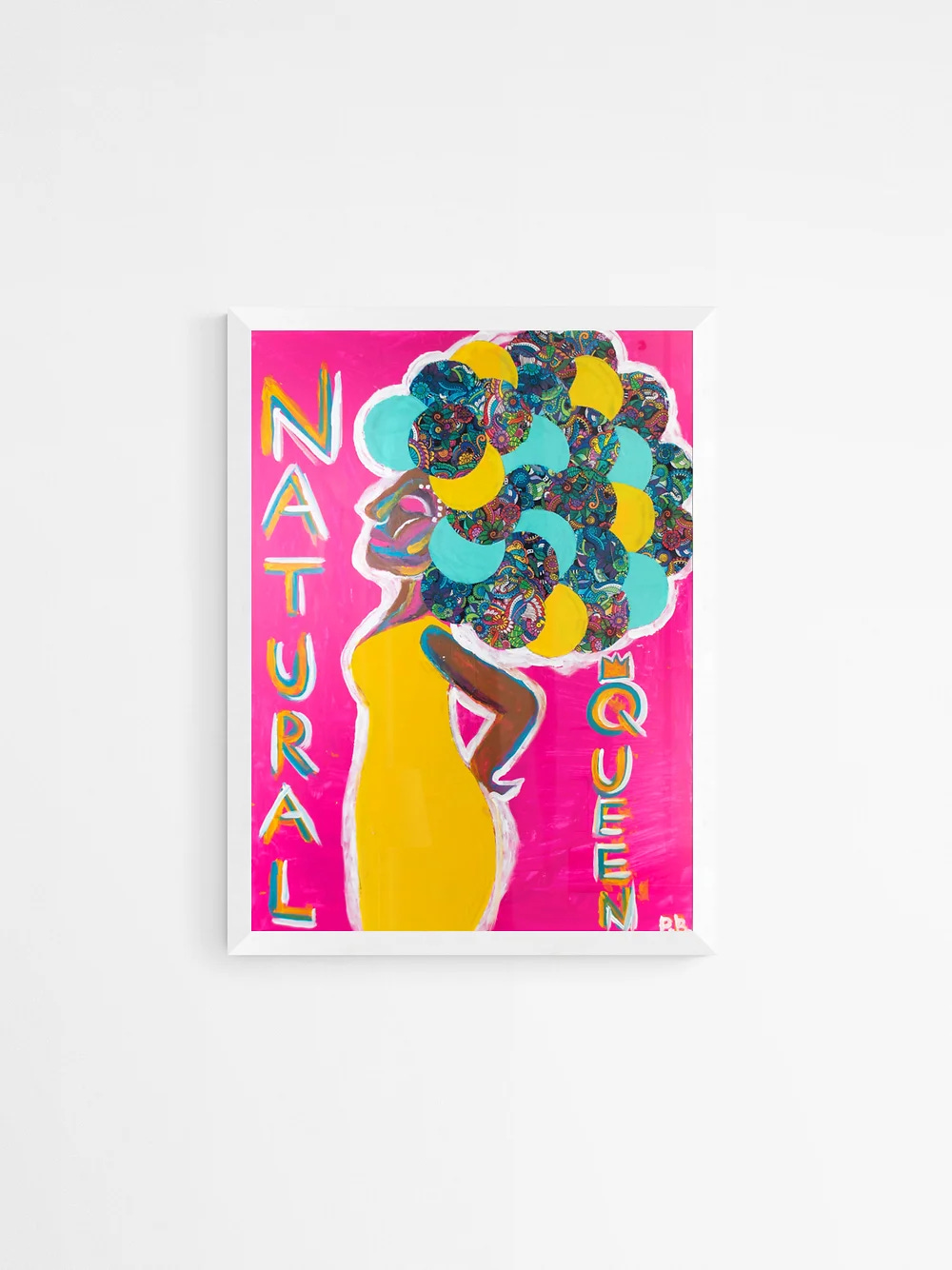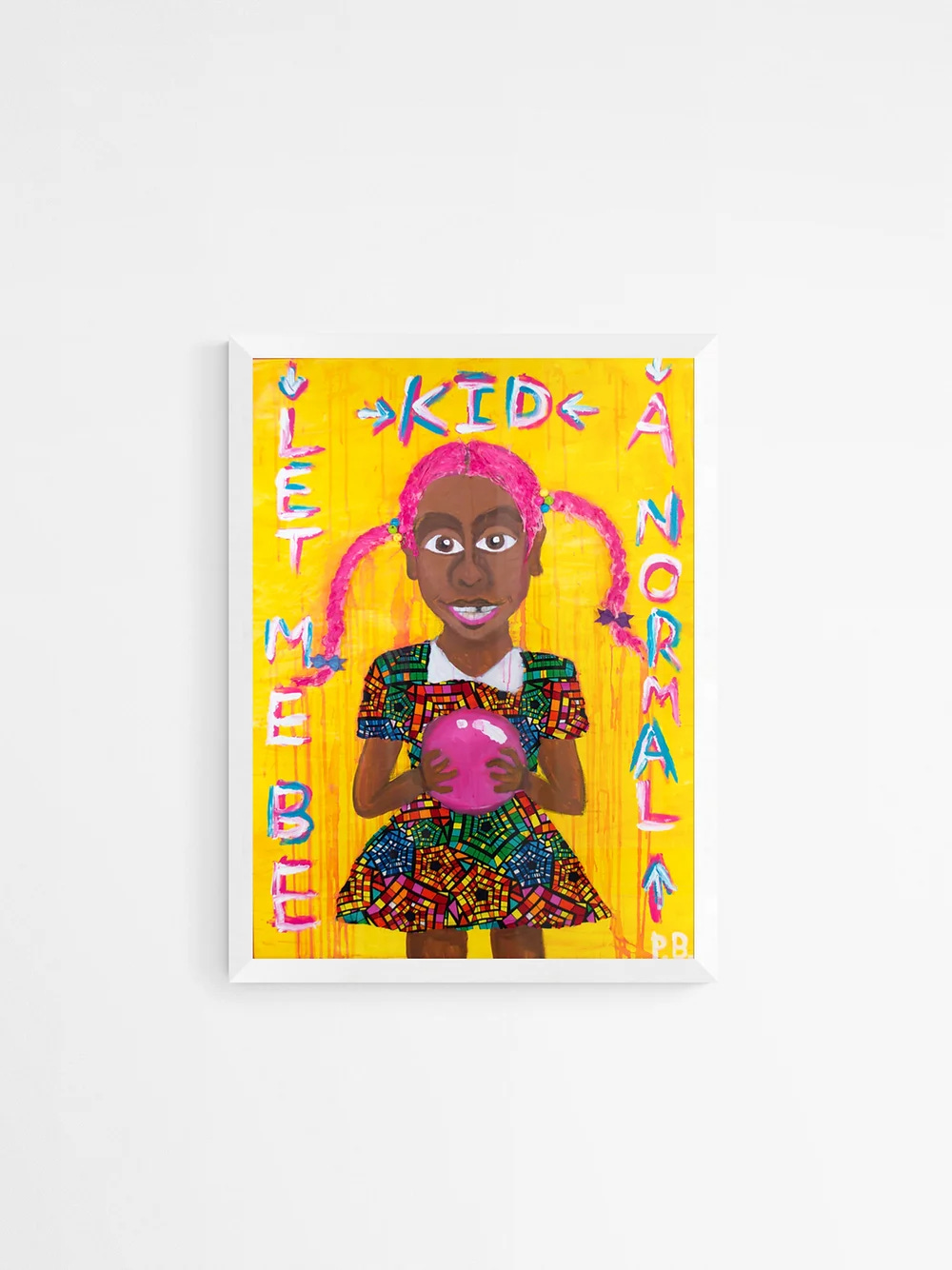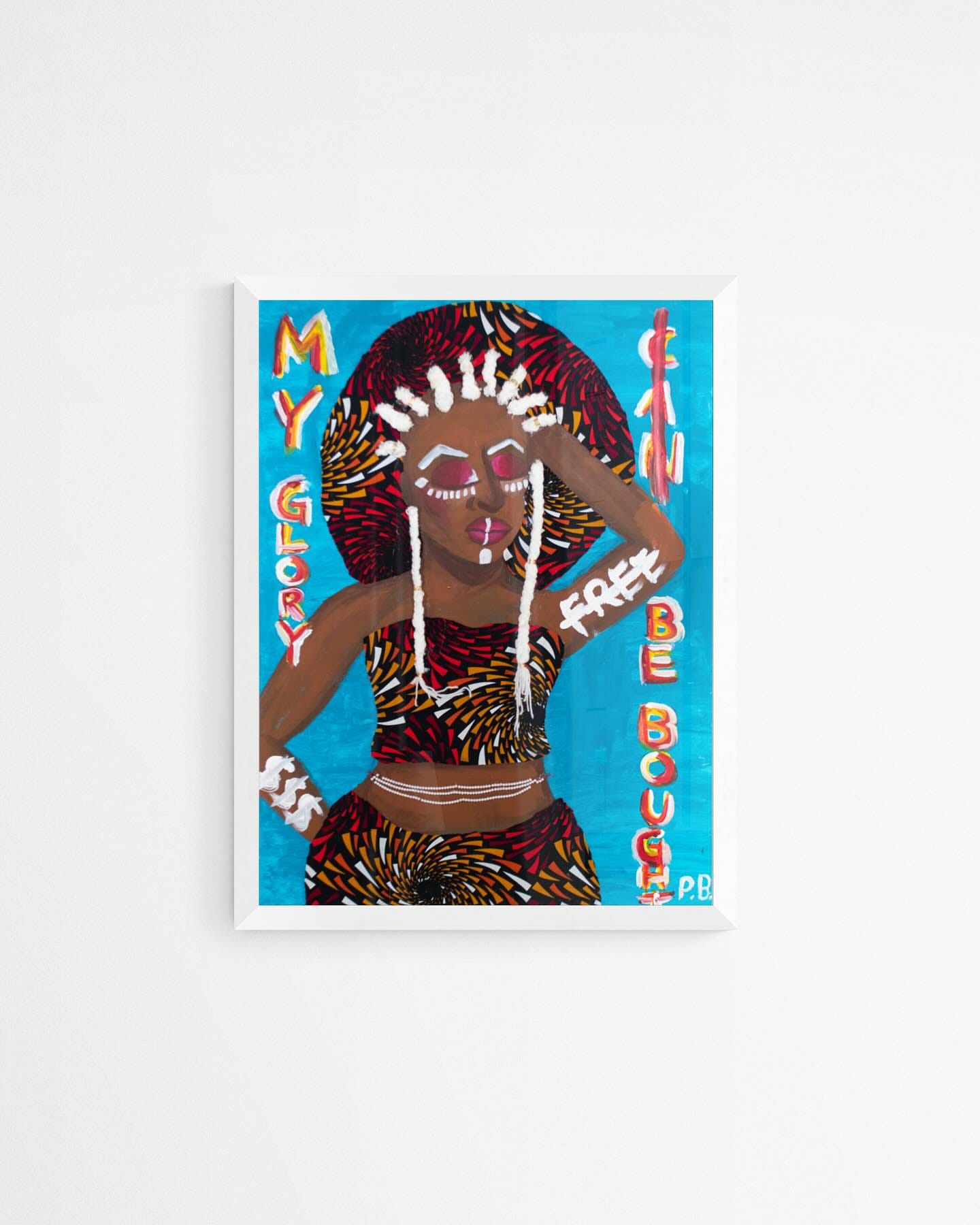Art, Storytelling, and Connection with Phoebe Burns
An award-winning multimedia artist who has mastered presence and voice in her prolific body of work, PB Surrealism Studio 115 is starting needed conversations with her art.
On the first floor near the main gallery, Phoebe Burns’ studio jumps out. A striking piece of art is always in the window. Visitors are met lately with a woman’s eyes. Her work is distinctive and thought-provoking. Phoebe Burns did a series of mixed media paintings that tell stories from a black feminist perspective. She wants these conversations to humanize and connect us. Her figures tell her stories.
Burns is a young black artist who is relaying her individual experience. She studied Digital Art and Photography at the University of Alabama. This series of paintings uses figurative abstraction with paint and fabric to tell the stories of black women. Her intent is to stop her audience in their tracks. They are powerful challenges to the status quo that is so often violent towards black women and girls.
She is gently direct. It is easy to trust her perception. Of White Feminists she asks: “Please just listen and amplify what we (black women) say.” So, in the spirit of Ms. Burns, lets look through what she has had to say about her important work.
Of this multimedia painting Burns says, “Celebrating the beauty of Black women with ‘A Different Type of Crown’. This piece embodies grace, pride, and the freedom to embrace natural hair without fear.”
She is referring to the antagonistic relationship our society seems to have with black women’s hair. Historically, black women were legally barred from wearing their natural hair uncovered in the United States. That legacy echoes out into today. Young black women hear too often that their natural hair is unprofessional. She chooses to send this message with confidence and love. You can see the joy she is radiating, but also the defiance in her self-love.
Of her work #BlackGirlsAreGirlsToo, Burns says, “This powerful piece challenges society’s perception of black girls and reminds us of their innocence and worth. Let’s honor the memory of those whose lives were cut short and advocate for the protection of all black children.”
The Center on Gender, Justice & Opportunity Georgetown is quoted, “The Center’s preeminent research, Girlhood Interrupted: The Erasure of Black Girls’ Childhood, documented what Black women and girls already knew well from their life experiences: adults perceive Black girls as less innocent and more adult-like than their white peers, from ages as young as 5-9 years old.” This bias results in violence and even death for black girls and women in the US. Breaking this bias protects them. Art like Burns’ is powerful. These connections she is making in her art are a force for good.
“‘Can’t Buy My Beauty’ is a reminder that despite the double standards towards black women [when it comes to beauty], they are still beautiful. From the full lips to the full behind, you still shine. Never believe that you are less than when the society you live in is paying to look like you.”
“The Men We Protect, is a reminder that the future depends on what we do in the present, therefore we must not ignore the past. Because the future of black children depend on it.”
Black children, especially black boys, are at a higher risk of violence in almost every category of life. Black children often experience violence from the community resources meant to protect all of us. Discrimination leaves them especially vulnerable. Black mothers and black women often end up stepping in to protect them. In another interview, Burns told us how most of black feminism is specifically protective of black men. Black women face some of the highest instances of violence, systemic racism and discrimination. Burns is referring to the reputation black women get for being protectors even in the face of their own discrimination. Her art starts these conversations in her studio all the time, with people of every background. This is how thoughtful art creates empathy. So that everyone is safe in our communities.
The Connections Art Makes
Phoebe Burns focuses on the stories and experiences of black women in much of her work. Her audiences, however, reach far past that one demographic. She is starting these conversations with people of all backgrounds. Many of us hear the stories of violence towards black people of all ages, but Burns is telling these stories in such an evocative way. Her work brings a concise point that cuts straight to the heart. She isn’t starting educational conversations, she is making emotional connections around these stories. She is humanizing black people and bringing an awareness that stays with her audiences. Visit her website to see her available works or visit her in studio 115 to see firsthand how her art is a force for good.






